Tato keš je Earthkeš, nehledejte zde schránku ani sešitek, ale odpovězte písemně na otázky na konci textu.
Stylolity na nádraží v Bohumíně
Na nádraží v Bohumíně je na dlažbu a obklady použit vápenec. Tato sedimentární (či usazená) hornina je tmavě béžová až nahnědlá s velmi jemnými zrny, biogenního typu se zkamenělinami. Tento vápenec však skrývá další tajemství, v kamenné dlažbě nalezneme podivné jizvy. Tyto známky pohnuté minulosti horniny se nazývají stylolity.

Vápenec se stylolity a s fosílií
Stylolit
Stylolit je geologická struktura vzniklá při tlakové deformaci horniny. Jeho vznik může být zapříčiněn jak diagenezí (zpevnění sedimentů na horninu), tak i orogenezí (horotvorné vrásnění).
Jedná se o šev v hornině, jehož průřez vidíme na dlaždicích. Stylolit vznikl v místě, kde tlakové síly rozpustily částice křemičitanu a uhličitanu v hornině, čímž se zmenšil její objem. Toto rozpouštění vytváří v hornině tenké silikátové vrstvy a dochází k němu pouze při výrazné litostatické zátěži (a tudíž ve velké hloubce).
Geometrická klasifikace stylolitů
Park a Schot popsali několik různých typů stylolitů podle jejich geometrického tvaru.
- Jednoduchý (primární) typ, vypadá jako vlna

- Šitý typ, malé nepravidelné vroubkování

- Typ „Up-peak“ nebo „Down-peak“ (obdélníkový tvar)


- Hřebenový typ (kónický a špičatý)

- Typ seismogram

Vznik
Tyto tektonické útvary podávají důkaz o deformaci v kompresním režimu, většinou se jedná o horotvornou kontinentální srážku tektonických desek. Může se ale také jednat o diagenezi. Stlačení sedimentů vyššími vrstvami snižuje jejich pórovitost a obsah vody, které vedou k jejich stmelení a vzniku pevné horniny.
Díky stylolitům můžeme určit hlavní směr tlaku, který působil na horninu. Tento tlak směřoval kolmo k pomyslné linii stylolitu (na obrázku níže je orientován vertikálně).

Směr tlaku na horninu při vzniku stylolitu
Kalcitové žilky
Jakmile se snížil tlak působící na horninu, uhličitan vápenatý rozpuštěný v místě stylolitů se opět znovu vysrážel. Suspendované ionty se nahromadily v prasklinách a v prázdných místech a nakonec v těchto mezerách vykrystalizovaly a vytvořily tvrdé bílé kalcitové žíly a krystaly.
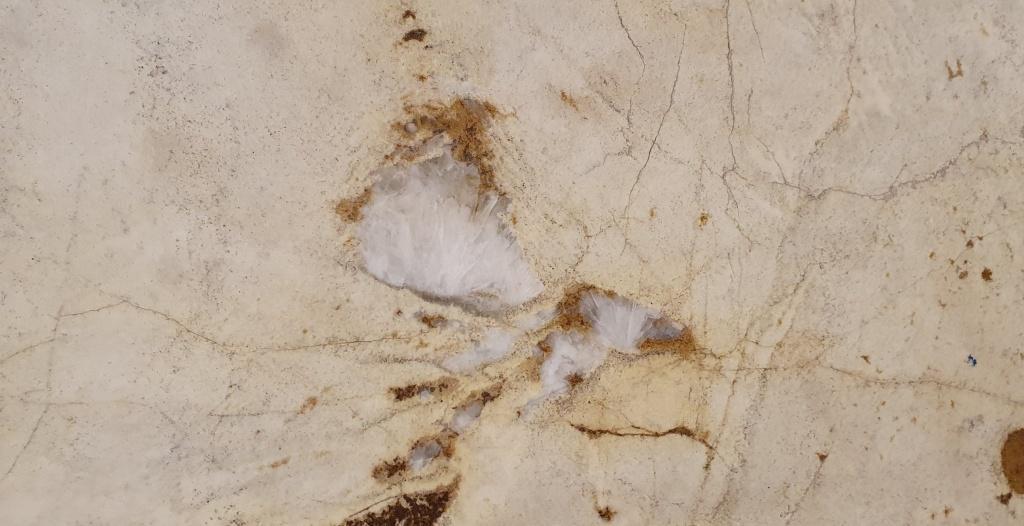
Kalcit vykrystalizovaný v dutině
Geoda
Geoda je dutina v hornině, která je obvykle po vnitřním obvodu vyplněna menšími či většími krystaly minerálů, směřujícími dovnitř dutiny. Dutina může být vyplněna krystaly křemene, kalcitu…
Zdroje:
Wikipedia
http://christian.nicollet.free.fr/page/TectoCassante/tectocassante.html
http://perso.ens-lyon.fr/romain.berardozzi/ST/Circuits_geologiques/geol_grenoble.php
https://www.sciencedirect.com/topics/earth-and-planetary-sciences/stylolite
Otázky k této Earthkeši:
Najděte v hale stěnu z fotografie 1 a její detail fotografie 2. Pokud vstupujete hlavním vchodem, je stěna přímo před vámi po pravé straně.
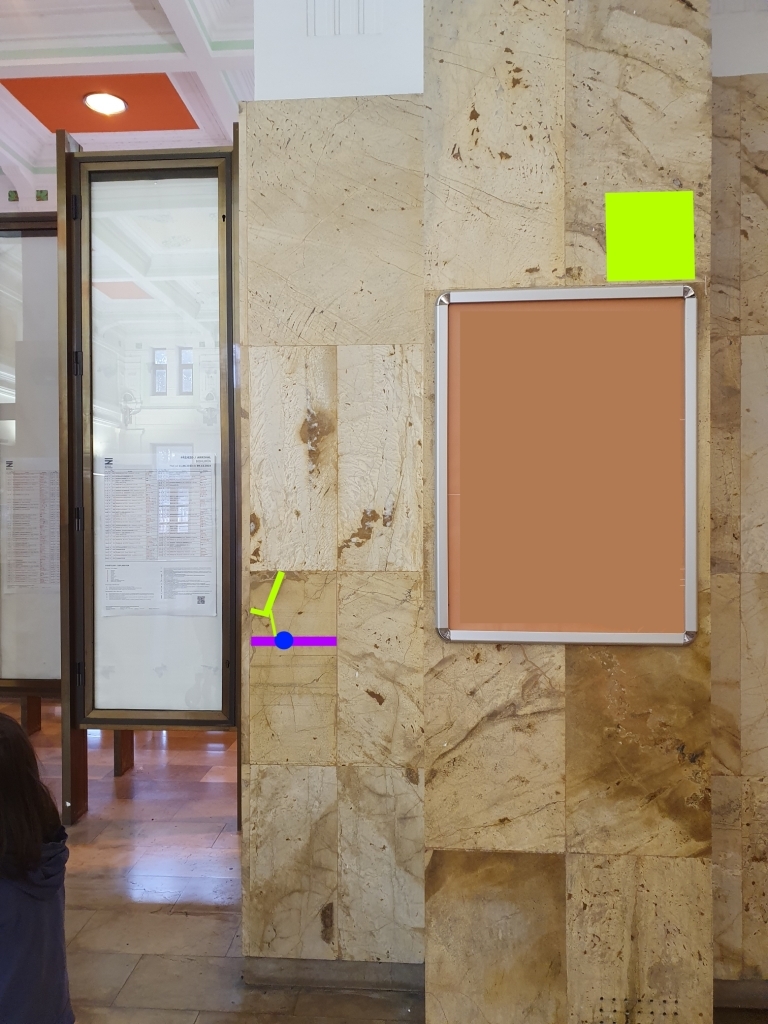
Fotka 1
- Najděte stylolit v místě fialové čáry. Podle vás o který typ se jedná ? (viz popis)
- Co se nachází v místě modrého kruhu ?
- Určete kterým směrem byla tato hornina stlačena : horizontálně (B), nebo vertikálně (A) ?
- Popište co vidíte v místě zelených čar (fotka 1) a čtverce (fotka 2) ?
- Pojmenujte tyto úkazy s pomocí popisu této Earthkeše. Vysvětlete jejich vznik.
- Přložte vaši fotografii na místě, nebo fotku předmětu, který vás representuje.
- Nepovinné : Udělalo by mi radost, kdybyste v hale nádraží našli jiný typ stylolitu, než je ten z první otázky a přiložili jeho fotku.
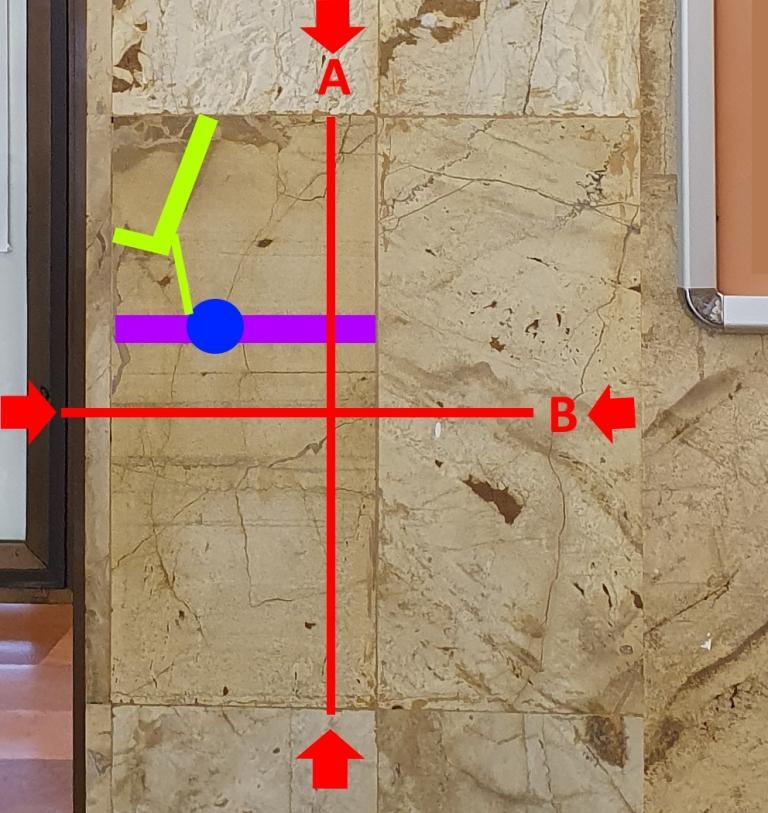
Fotka 2
Posílejte mi návrhy svých odpovědí buď přes můj profil, nebo přes geocaching.com (Centrum zpráv) a poté zalogujte keš. V případě problému vás zkontaktuji. Logy bez odpovědí budou smazány.
This cache is an Earthcache, don't look for a box or a notebook here, but answer the questions at the end of the text and send it to me.
Stylolites at the railway station in Bohumín
At the railway station in Bohumín, limestone is used for paving and tiling. This sedimentary rock is dark beige to brown with very fine grains, biogenic type with fossils. However, this limestone hides another secret, we find strange scars in the stone pavement. These signs of the rock's disturbed past are called stylolites.

Limestone with stylolite and fossil
Stylolite
A stylolite is a geological structure formed during the pressure deformation of a rock. Its formation can be caused both by diagenesis (consolidation of sediments into rock) and by orogenesis (mountain-forming folding).
This is a seam in the rock, the cross-section of which we see on the tiles. Stylolite formed where compressive forces dissolved the silicate and carbonate particles in the rock, reducing its volume. This dissolution creates thin silicate layers in the rock and occurs only under significant lithostatic stress (and therefore at great depth).
Geometric classification of stylolites
Park and Schot recognised several different types of stylolites according to their geometric shape.
- Simple (primary) type, looks like wave

- Sutured type, small irregular crenelations

- Up-peak or Down-peak type (rectangular shape)


- Sharp-peak type (conical and pointed)

- Seismogram type

Formation
These tectonic formations provide evidence of compressional deformation, usually a orogenetic continental collision of tectonic plates. But it can also be diagenesis. The compression of sediments by higher layers reduces their porosity and water content, which lead to their consolidation and the formation of solid rock.
Because of the stylolites, we can determine the main direction of pressure that acted on the rock. This pressure was directed perpendicular to the imaginary line of the stylolite (it is oriented vertically in the image below).

Main direction of the pressure on the rock during creation of stylolite
Calcite veins
Once the pressure on the rock was reduced, the calcium carbonate dissolved at the site of the stylolites re-precipitated. Suspended ions accumulated in cracks and voids and eventually crystallized in these voids to form hard white calcite veins and crystals.

calcite crystallized in the hole
Geode
A geode is a cavity in a rock, which is usually filled along the inner circumference with smaller or larger mineral crystals, directed into the cavity. The cavity can be filled with crystals of quartz, calcite...
Questions for this Earthcache:
Find in the hall the wall from photo 1 and its detail from photo 2. If you enter through the main entrance, the wall is directly ahead on your right.
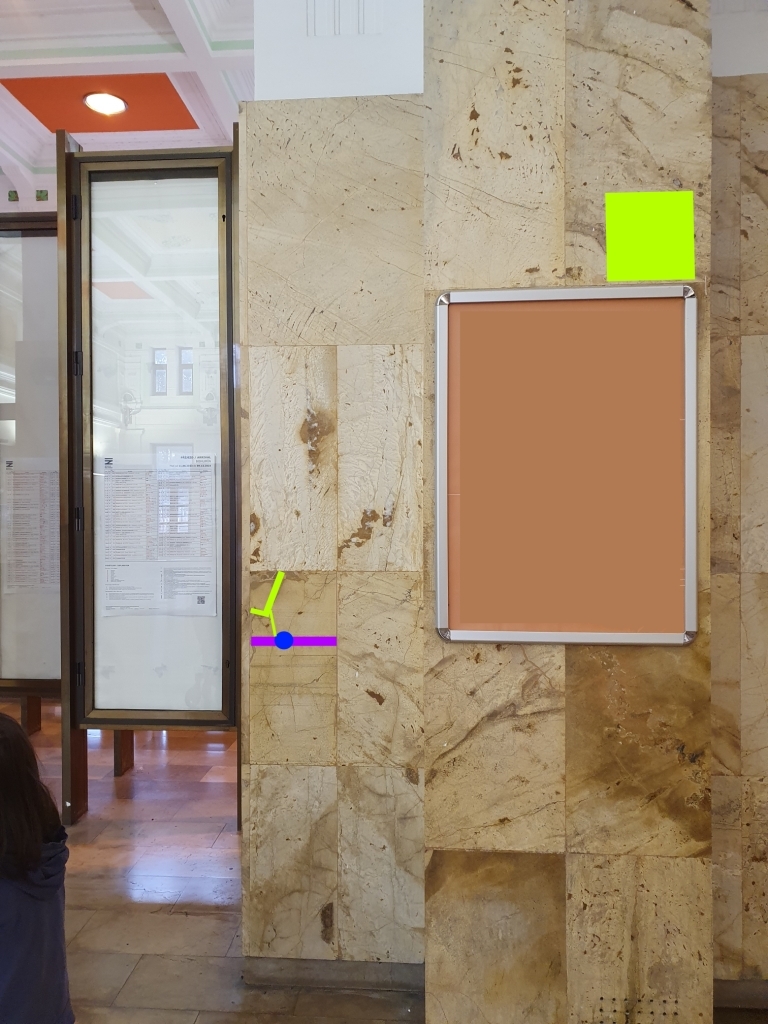
Photo 1
1. Find the stylolite at the location of the purple line. Which type do you think it is? (see description)
2. What is located in the place of the blue circle?
3. Determine in which direction this rock was compressed: horizontally (B) or vertically (A)?
4. Describe what you see in the place of the green lines (photo 1) and the square (photo 2)?
5. Name these phenomena using the description of this Earthcache. Explain their origin.
6. Attach a photo of you on the spot, or a photo of an object that represents you.
7. Optional : It would make me happy if you could find a different type of stylolite than the one from the first question in the station hall and attach a photo of it.
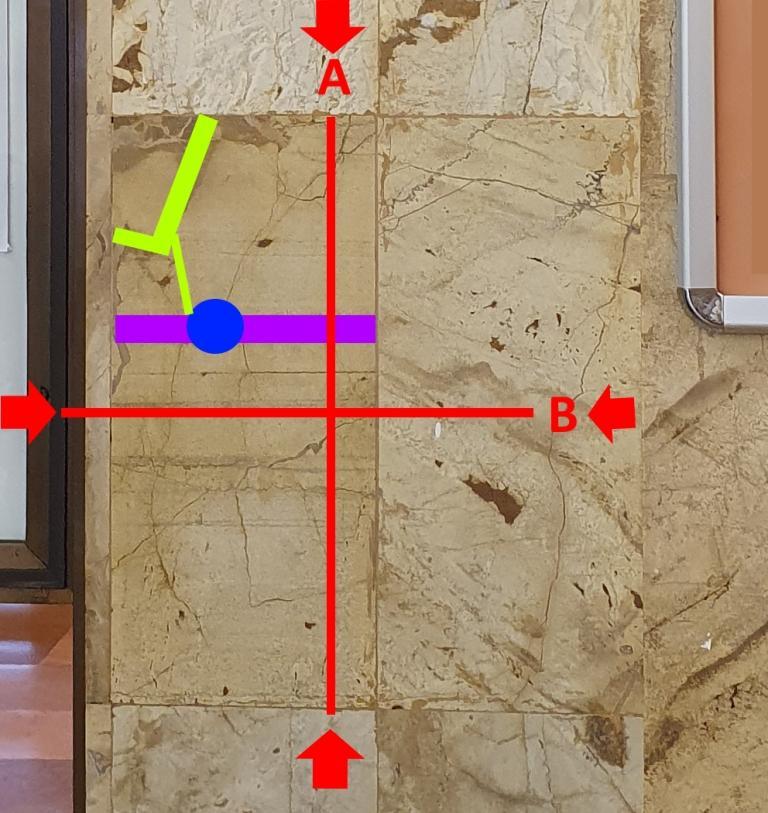
Photo 2
Send me your answer suggestions either through my profile or through geocaching.com (Message Center) and then log the cache. I will contact you if there is a problem. Logs without answers will be deleted.